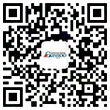Will SAIC walk out of Ssangyong shadow?
Shanghai, February 11 (Gasgoo.com) Chinese auto giant SAIC Motor saw its sales profits of 2008 fall by at least 50%, hit in part by its investment in South Korea's Ssangyong Motor. Although SAIC has pledged to work toward the normal operation of Ssangyong, its Korean debt-ridden unit now under bankruptcy protection, Ssangyong is a looming burden to SAIC, who may have an uphill task to walk out of this shadow.
On Feb 6, the Seoul Central District Court approved the bankruptcy protection application from Ssangyong. The decision ends Shanghai-based SAIC's four-year control of S. Korea's fifth largest automaker. But SAIC still retains its interests in Ssangyong's assets and hopes that a "practical business revival plan" will be mapped out and implemented to put Ssangyong back on track as soon as possible.
All Chinese staff from SAIC have quitted Ssangyong and returned to China, with the last Chinese staffer, the accounting manager, leaving on Feb 9. About 30 SAIC staff, including about 10 executives, worked in Korea. SAIC seems to be washing its hands off the court receivership process. However, after Ssangyong's filing for bankruptcy protection earlier, SAIC had pledged to "do its best" in the court receivership process.
Some auto industry experts in China said that Ssangyong's case will not pose a big threat to SAIC's financial performance and operation, as Ssangyong is comparatively weaker in terms of its SUV branding, and its SUVs are mostly sold in South Korea, so the market is limited. Moreover, SAIC may well take advantage of other brands it had purchased, such as Roewe, to develop and boost its SUV sector.
South Korea-based Ssangyong, facing a serious liquidity crisis amid a global recession, saw its sales tumbling 30% to 92,665 vehicles in 2008 as customers shunned its gas-guzzling SUVs. SAIC Motor Corp said its 2008 net profit may have dropped more than 50% from 2007 mainly due to weak sales and losses from its Korean unit Ssangyong Motor.
Lured by Ssangyong SUV's 50% market share in S. Korea, SAIC purchased 49% of Ssangyong's shares in October 2004 for $500 million to add SUVs to its production line-up. It later became the controlling stake-holder by increasing its shares to 51%. In November 2008, its interest in Ssangyong stood at 1.851 billion yuan ($271 million).
SAIC's investment in Ssangyong is seen as a failure, which has incurred heavy losses to the Chinese auto giant. Industry analysts said that SAIC was not cautious in deciding to buy stakes in Ssangyong, without enough knowledge of the business environments and labor union culture of South Korea.
China's auto industry had expected to see a shining example of a leading Chinese carmaker going global by acquiring a foreign car firm, but now the SAIC-Ssangyong rift can serve as a wake-up call to several auto companies in China who have been attempting to buy global auto brands or companies such as Volvo from Ford.
SAIC still retains its interests in Ssangyong's assets and wishes for a "practical business revival plan" to put Ssangyong back on track as soon as possible. Will SAIC walk out of its trouble with Ssangyong soon for their relations and operations to run in the bright direction? It remains to be seen.
Gasgoo not only offers timely news and profound insight about China auto industry, but also help with business connection and expansion for suppliers and purchasers via multiple channels and methods. Buyer service:buyer-support@gasgoo.comSeller Service:seller-support@gasgoo.com







